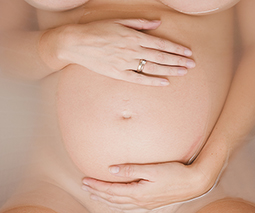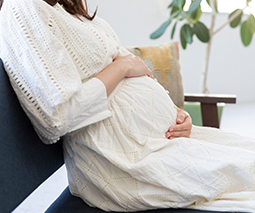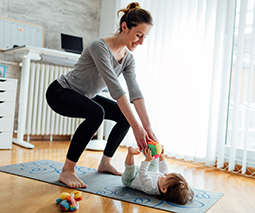The one thing every new mum can do to save her pelvic floor (it’s not kegels)

One of the decidedly less glamorous parts of pregnancy and childbirth is what can happen to your pelvic floor and surrounding organs. It can take quite some time to feel like you are back to ‘normal’, whatever that new normal is after giving birth.
Part of this uncertainty can result in women not understanding when something could benefit from further investigation and treatment. A common condition is pelvic organ prolapse – it’s something that Heba Shaheed, women’s health physiotherapist and pelvic floor expert, discusses in the latest episode of Bellies, Bits and Babies with busy mum of two, Magdelena.
First things first: What is a prolapse exactly?
Heba explains, “There’s this misconception that prolapse only affects women when they’re elderly or after menopause. But the truth is that pelvic organ prolapse affects women as soon as they give birth and if they’ve had an assisted birth they do have a higher risk.
“Assisted birth can increase your risk of pelvic organ prolapse because of the pressure that’s used to pull the baby out. So for example in the case of forceps when they go in and they tug the baby out, the connective tissue that’s holding up your uterus and holding up your bladder can also get overstretched.
And so instead of your bladder returning back to that high position in your pelvis after birth, those connective tissues are now overstretched and in some cases they can also tear and so then the bladder now sits at a lower position.
“Because it sits at a lower position you’re more likely to then have some bladder symptoms, in particular bladder control problems. So women might feel that they leak with coughing, sneezing, laughing, jumping and so on, and you might have those other symptoms of pelvic organ prolapse, like lower back pain.”

A pelvic organ prolapse can involve all or any of the organs in the pelvis – the bladder, the uterus, and the rectum.
“There’s actually a few different grades of prolapse,” explains Heba. “Grade One and Grade Two … those organs are still inside your vagina so you might not even notice that you have a pelvic organ prolapse because it’s still inside; whereas a Stage 3 or Stage 4 pelvic organ prolapse [is where] you can actually see it protruding through the vagina. So if it’s a bladder prolapse then the wall of your bladder can protrude down and through. If you have a rectum prolapse then the wall of the rectum or the back wall can protrude through, and if you have a uterine prolapse then the actual cervix can come down and protrude through.”
What are the signs of a prolapse?
After the assisted birth of her son five years ago, new mum Magdelena thought the feeling of heaviness and cramping she was having was a normal part of her post-birth recovery – as was the incontinence she was experiencing. But when the weeks turned into months and then a year and things hadn’t improved, she went looking for answers.
“I thought it was normal; I had a baby, my pelvic floor is weaker, so I suffered from incontinence for months – probably over a year – until I did a cardio class for about 45 minutes and I ended up with a wet crotch and I thought, ‘that’s not normal’.”
Listen to Magdelena’s full story:
But when Magdelena spoke to other women, she was shocked that the condition was so common and no one was talking about it. She says, “There are so many women out there with prolapse who think they’re alone. Some woman think their life has ended. They can’t enjoy their baby. They keep thinking about that feeling that something’s wrong. They feel that their sex lives are not going to be the same, their relationship with their husband is not going to be the same, so that can really affect their life.”
You need to do more than a few kegels to save your pelvic floor
So – what next? There are definitely ways to improve the condition and manage it, says Heba. But it needs a consistent approach.
“One of the key things that women miss out on, is that they think that if they just do a few kegels here and there, that it will help. But the truth is, you have to make sure that your pelvic floor muscles are working in your day-to-day activity as well,” she says.
“I’m a big believer in functional pelvic floor training, ensuring that that pelvic floor is activating with activity, not just kegels at the traffic lights, because realistically that’s probably not going to help you in your day-to-day life. And that’s why engaging those pelvic floor muscles with a squat, with a lunge, with a bicep curl and so on [is so important].”
Breathe in, breathe out
Heba’s other brilliant-but-basic tip is to concentrate on getting your breathing right when you engage your pelvic floor (also known as engaging your ‘core’).
“The simplest exercise that they can do is just making sure that that pelvic floor is engaging on the breath out and letting go on the breath in. I often say to the women that I work with, just dedicate 10 minutes a day – if you can do more than 10 minutes, awesome. But your minimum baseline should be 10 minutes a day,” she instructs.
How to engage your pelvic core:
You can practice engaging your core at any time by feeling your ribs expand to the sides while you inhale, then as you exhale contract and zip up your abs, thinking about pulling your navel up and in toward your spine. Keep breathing normally while you continue to hold your abs in.
“When you take a deep breath in, your diaphragm expands in a three dimensional way, it expands sideways, outwards, forwards and it also expands downwards – and the downwards movement causes your pelvic floor to get pushed down as well. That’s the natural way that your pelvic floor moves in response to a deep breath in.
And so when you breathe out and the air comes back out of your diaphragm, your diaphragm then becomes smaller as it comes back in. It goes back up. It becomes shorter and smaller. And that particular movement of the breath out causes the pelvic floor to get lifted up. There’s connective tissue in your body that when you breathe in, causes the pelvic floor to drop down. And when you breathe out it recoils so that the pelvic floor lifts up. And that’s why we have to make sure that we’re engaging the pelvic floor on the breath out, because we need to go with the natural physiological way that the pelvic floor activates.”
Simple, non? Well, with practice Heba assures us that it will start to come naturally. So breathe in, ladies …
 Need some support to be the best parent you can be? Our Parent School parent coaching experts can help. Click to find out more or book a one-on-one session.
Need some support to be the best parent you can be? Our Parent School parent coaching experts can help. Click to find out more or book a one-on-one session.









